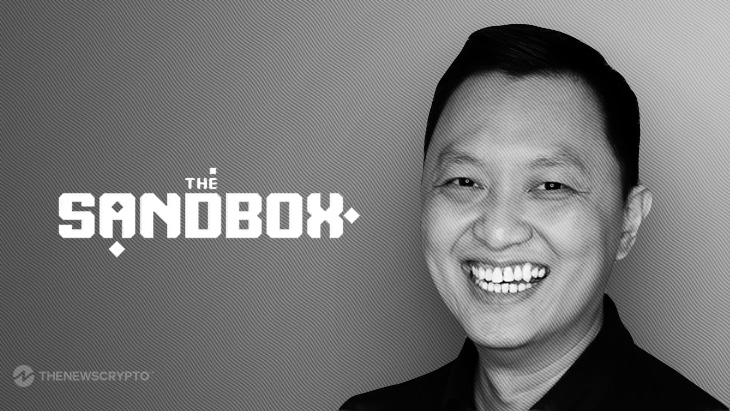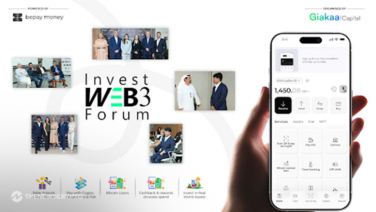Metaverse is evolving and users seek to explore excitingly innovative content. Opportunities and strategies such as democratized asset creation and content monetization are beginning to lure more players into the space.
TheNewsCrypto struck up an all-inclusive conversation with George Wong, Head of Singapore, on the upcoming updates of the Sandbox, the strategies for upgrading the metaverse space, and the optimistic regulations in Singapore.
George is genuinely grateful for the optimistic and pro-Web3 regulatory landscape that is evolving in Singapore. He highlights the goal of onboarding regional brands into the virtual world.
Certainly, The Sandbox has been lining up a series of thrilling launches for the metaverse community! We are eager to know about the Self-Publishing of Experiences in the Metaverse. Could you share more about it?
George Wong (GW): If you have been a follower of the Sandbox for the last few years, a lot of people who purchased our land were only owning the asset of the land, and a lot of experiences were curated because the platform was still on alpha.
But with the introduction of ‘self-publishing’ in the fourth quarter of this year, anyone with LAND can now start to build. And that’s important because, in the metaverse, the most important thing is actually content. So if you have an experience on your LAND, then people will come and then there’ll be traffic. Without content, there’ll be no traffic, digital media could also relate to this. So in the metaverse, the logic is the same. So that’s why self-publishing is very important.
We have seen some incidences where other platforms or metaverses receive more hype from a lot of people, but they don’t focus on the content. And without content, those metaverses eventually start to die out because there’s nothing there. You can’t go into a metaverse and, and just look at its lands and nothing else. You need something to do something. You need some experiences to spend with your friends in the virtual world. This is also why self-publishing is important.
It’s the enabler for all these creative studios and individuals to come onto the metaverse and very easily develop their own experience in the Sandbox. Because our tools are no code. So those who don’t have any coding background can still come into the Sandbox, build NFT assets, monetize them, and build games based on their vision.
So that’s why for us, it’s very exciting as we move into 2024. We hope to focus all our attention on getting amazing content into the platform.
What benefits will be unlocked for LAND owners, creators, and metaverse enthusiasts after the successful implementation of Self-Publishing by the end of Q3?
GW: There are a few layers. Let’s say you are an investor and you have invested and bought LAND. Now the whole idea of location, where your land is, that value comes in. ’cause a lot of people don’t see that value right now when it comes to being in The Sandbox. They just buy land anywhere and then they think that the value will be all the same.
But even in the metaverse, location is very important, like in the real world. So one of the things that investors will start to see is that if you are next to a very interesting experience, you’re more likely to have spillover traffic. A LAND that has an ‘experience’ built will have more value. The growth in valuations also relies on content. So valuations will eventually go up with building good content. So that’s one thing for investors.
Now, when it comes to gamers, it becomes more attractive because you can now try as many indie and professional games that have been built. There will be many more games coming up sooner. Since we’ve launched, many people have started launching their own experiences onto our platform. We believe when it is fully public in the fourth quarter, we’ll get a lot of exciting content. So gamers enjoy and win because they have much more content to engage with in the metaverse. And the same goes for creators.
Now we open up the monetization opportunities by having your own experiences and being able to issue your own NFTs. We have now democratized and monetized NFT Asset Creation in the Metaverse for the long run. This wasn’t possible previously. We wanted to manage the quality, but I think that now with this launch, anyone can just jump into the platform, and emerge to be a creator that does monetize their value.
Look at X (Twitter), which recently announced monetization for creators with ample followers. It drew so much interest back into X (Twitter) because monetization is there. While many people do not think that platforms should incorporate monetization, the reality is that monetization is indeed important for supporting good content creators in the digital space.
What is the impact of recent regulatory actions implemented in the macro economy on the metaverse industry?
GW: It majorly depends on the market. At the moment, certain markets have most of their regulatory actions focused on confirming whether crypto tokens & NFTs are securities or not.
The worst scenario in Southeast Asia is that a lot of markets have unclear regulations. This uncertainty confuses people about whether they can proceed with certain actions or not. I’ve seen it in certain markets that I’ve been in where they became over-regulated. But I’m fortunate and happy that the regulators in Singapore have a very positive stance.
I would say in the context of Southeast Asia, Singapore is leading the way. The regulators comparatively hold a very positive approach. They are regulating to the extent that it protects investors, but at the same time, they are also encouraging innovation. This is the point where something most regulators suffer. When they solely focus on protecting investors, they cannot innovate or test out new use cases.
They would do extensive fact-finding for clearer regulations. They will find a way to protect investors without affecting the diversification of innovation. For example, because of the issues with stablecoins, they have come up with a policy on how to regulate stablecoins.
So I don’t see it as a major issue unless they do blanket policies. I think blanket policies are the issue. When certain policymakers just say that all tokens are securities, that’s when a problem is created in the market. So, ultimately, I believe that clarity in regulations is the most crucial aspect that every market needs right now.
Can you give an overview of details highlighting the major global brand collaborations onboarding the Lion City, the popular metaverse neighborhood within The Sandbox?
GW: Since we started the project of building the Lion City neighborhood in the Sandbox, we have about 35 brands now in total — a mix of international and local brands.
But I think the one that is worth highlighting and will be introduced very soon is ONE Championship. Now, for those of you who are not familiar with ONE Championship, it is the fourth-largest property in the world. This Singaporean-based entity is niched in the Mixed Martial Arts (MMA) industry. It’s very refreshing to see such a big brand on a global scale in Sports so committed to a Web3 strategy. Whenever we meet every week, they discuss with us what can they do in Web3. They are looking to build various types of games, and engagements, and it’s not about money.
I think certain major brands are only looking at Web3 space because they think it’s quick money. But when you look at brands like ONE Championship, they’re more like, how do we use this technology as a way to build a strong community in the digital space? How do we build fandom? I hope this is what more big brands globally could be working on with us. So that’s one example of brand collaboration for the Lion City that I would highlight.
Of course, globally, we have many international brands that are working with us. You are going to see a lot more in 2024. We are going to continue expanding in Southeast Asia and our goal is to make as many big Southeast Asian brands global.
What’s your bullish forecast on Singapore transforming into a leading global hub for Web3 and the Metaverse?
GW: Right now, we are at a crossroads, building a good foundation. We have collaborated with a lot of big brands that have a good regional and global reach. But I feel that we could do a lot more as more brands are coming into the space right now.
What we need is a good population of players and users. So Singapore, a small country, is a very small domestic market. So the user base actually will come from the widest Southeast Asia. So how do we tackle that? Doing a lot of cross-country collaborations. That is why, if you look at The SandBox, unlike other metaverses, we have local companies. We have a base in Singapore and Thailand for Southeast Asia. We also are in many parts of East Asia like Korea, Japan, Hong Kong, Taiwan, and most hopefully China very soon. So you see, we have a regional presence and it’s not just a representative, but the whole company.
I think that strategy is something that a lot of Web3 does not do. Currently, Web3 likes to be one place and tries to cater to the global market. However, having a local development team allows us to establish cost-effective collaborative opportunities across markets, enabling us to go deeper and engage with brands that are relevant to the local market, while building a community in the local space.
And I think Metaverses needs to grow that way. I strongly believe that with an effective strategy, we have built a good foundation for Singapore and are going into other markets. The next markets that we are looking at to aggressively grow are the Philippines, Indonesia, Thailand, and Vietnam for Southeast Asia. In the Web3 context, we collaboratively work in a very decentralized way to achieve the goal of making Singapore and the rest of Southeast Asia into the “Sea-verse” or “Southeast Asia-verse.”
How was your time in Coinfest Asia 2023 and what is that one unique factor you look out for in events like these that unite the web3 ecosystem?
GW: It was fun and the setup was really cool. It’s a bit different than the others as in Asia you worry about rain having a fair outdoor experience.
What I look for in events like these is a genuine convergence of the Web3 ecosystem with solid business fundamentals. Events like this need to have this convergence as you know, now everybody’s got the tech, the tech is maturing, and people are adopting.
We need to find out how to grow even in bear markets and build sustainable projects. As you know bear market cycles are way shorter. So we need to fast at events like this. It’s fascinating to witness the evolution of the previous cycles. In the bullish times, the focus was on concepts like DJs, NFTs, and the like. Conversely, during bear markets, the corporate presence dominated with a more cautious approach.
The fusion of technology and business at events is what I believe will drive the Web3 ecosystem forward. My time at Coinfest Asia has been both enjoyable and enlightening, and I’m looking forward to more events that continue to strike this essential balance.
Disclaimer: The information provided in this interview article is for informational purposes only. It is not intended to be, nor should it be construed as, investment advice, financial guidance, or a recommendation to make any specific decisions. Readers are encouraged to conduct their own research and consult with appropriate professionals before making any investment or financial decisions.








